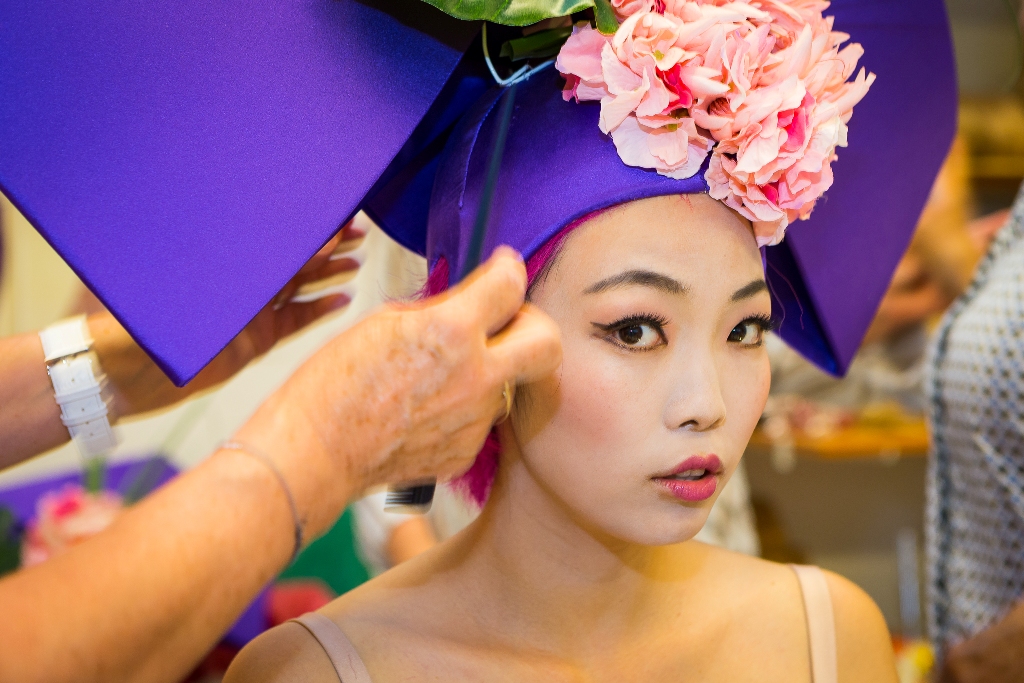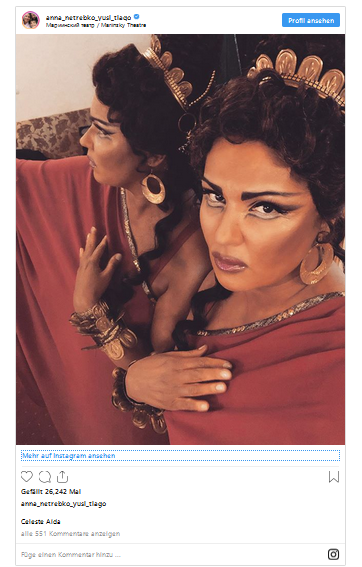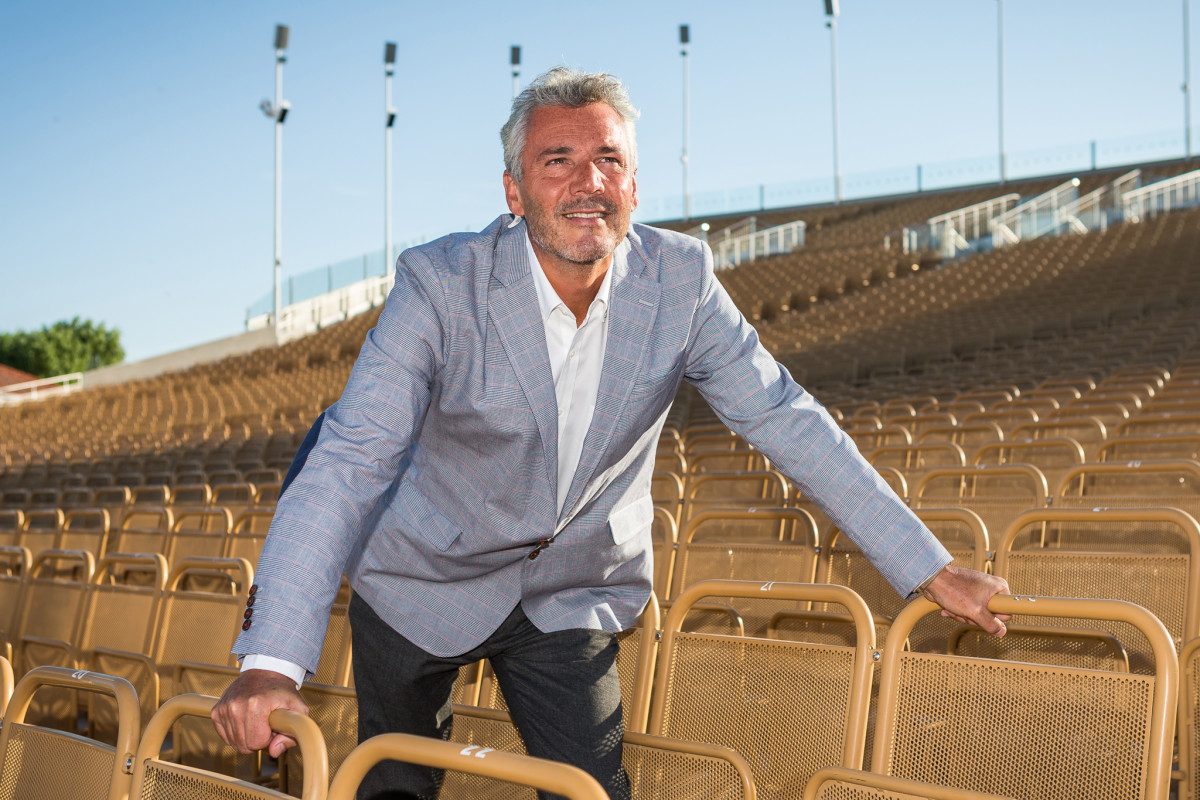Kevin Clarke
Operetta Research Center
15 July, 2019
Bigger is not automatically better, some claim, and that’s especially true for operetta, or operetta festivals. So just because the annual Mörbisch summer festival by the lake claims to be the “biggest outdoor operetta event in the world” does not make it the most noteworthy or even interesting around. Or does it? Because what does “big” mean from a consumer’s point of view? You get one (!) production at Mörbisch as opposed to seven (!) different shows at Ohio Light Opera. But the size of Mörbisch, the attention lavished on it by the Austrian media, allow for such a festival to give important impulses and point towards new horizons in performance history. Certainly when the show on offer is Franz Lehár’s 1929 blockbuster Das Land des Lächelns that was the focus of heated racism debates recently. How does one deal with such aspects in an intelligent way today? Will you find out by travelling to Mörbisch this summer?

A chorus girl putting on her costume for the 2019 “Land des Lächelns” production at Mörbisch. (Photo: Seefestspiele Mörbisch/Jerzy Bin)
The UK edition of The Conversation published an article last week entitled “Opera is stuck in a racist, sexist past, while many in the audience have moved on.” We read there that “some of opera’s most canonical works struggle to find relevance with a modern-day audience” and that the “tension reaches a boiling point when it comes to operas that contain racist and misogynistic elements.” The examples given are: “the ethnic exoticism deployed in Puccini’s Madama Butterfly and Delibes’ Lakmé; the Chinese stereotypes in Puccini’s Turandot, the lightly-veiled anti-Semitism in Wagner’s Ring cycle, the Muslim caricatures in Mozart’s The Abduction from the Seraglio, and the gendered violence in Bizet’s Carmen and Puccini’s Tosca,” to name just a few.
How does Das Land des Lächelns with its Chinese stereotypes and ethnic exoticism fit into such a context? And what about the traditional yellow facing used for productions of this Lehár operetta? If soprano Anna Netrebko can cause a firestorm on social media by posting a selfie of herself wearing “brownface” makeup for a production of Aida, how would a non-Chinese tenor playing Prince Sou Chong be received wearing the respective make-up?

Anna Netrebko’s selfie as Aida, posted on Instagram in June 2019. (Photo: Instagram / anna_netrebko_yusi_tiago)
The US-based organization “Final Bow for Yellow Face” actively lobbies theater companies to “replace caricature with character” in productions across ballet, opera, and theatre. But what about operetta companies?

Tenor Won Whi Choi putting on his costume for “Land des Lächelns” at Mörbisch, 2019. (Photo: Seefestspiele Mörbisch/Jerzy Bin)
Interestingly, the Mörbisch festival’s only apparent answer to these aspects is to cast two Korean tenors in the male lead, notwithstanding that fact that the story is set in China. Is the idea on display here that all Asians supposedly look the same? And if you dress a Korean up as a Chinese prince, is that more or less “racist” than doing it with a white Austrian singer? Or a PoC Austrian, for that matter.
It seems Mörbisch and its new artistic director Peter Edelmann don’t much care about these controversies, or about offering persuasive answers to problems that the operetta world faces in 2019. Answers, which could and should prove how the genre is still relevant and connected with contemporary life, which has indeed moved on since the days of Lehár, but also since the days of former Mörbisch intendant Harald Serafin who presented the last Land des Lächelns on the lake in 2001.

The new artistic director of the Mörbisch festival, Peter Edelmann. (Photo: Seefestspiele Mörbisch/Jerzy Bin)
Instead of a new dawn in matters of operetta relevance, Mr. Edelmann tries to consciously reconnect the festival with that “legendary” Serafin era and overcome the careful attempts of his immediate predecessor Dagmar Schellenberger who was hired to move the festival forward after the Serafin approach had been deemed outdated by the Mörbisch board members. It seems this is not the case anymore. First, Miss Schellenberger was fired, then Mr. Edelmann installed. And now Harald Serafin is back as the Eunuch in Land des Lächelns. The deep symbolic meaning of this is not lost on us.
A word that struck me while reading the reviews was that the new production of Land des Lächelns is “solid.” And that it respects “Viennese operetta traditions,” whatever that means considering that the show premiered in Berlin and is in many ways a typical Berlin style operetta of the 1920s, playing with (gender) aspects of modernity, plus offering a central superstar attraction, i.e. the Richard Tauber role that demands someone who can overwhelm you with vocal eroticism. Judging from the video clips on the Mörbisch festival homepage, Won Whi Choi and Robin Yujoong Kim are not that kind of performers in 2019.
And Leonard C. Prinsloo doesn’t seem to be a stage director who would turn this culture clash story – and its supposed “racist” stereotypes – into something worthy of discussion. You get a potbellied Buddha here and a massive dragon there, hoards of robotic chorus girls in Chinese makeup marching around, and that was it. Do Austrian operetta audiences demand no more from the genre? Is that why the Mörbisch and Baden and Ischl festivals offer the productions they do?

The set for the 2019 production of “Land des Lächelns” in Mörbisch. (Photo: Seefestspiele Mörbisch/Jerzy Bin)
When I asked my various travelling operetta reporters if anyone might visit Mörbisch and write about the new Land des Lächelns, the unison answer was: no! One who actually attended opening night only laughed at the question of critical reflection in this Land des Lächelns production and preferred not to comment publicly, since he’s on the board of some theater prize committee in Austria.
Actually, the novelty aspect of this Land des Lächelns is so limited that the company decided not to record the 2019 production, instead selling the old cast album from the Serafin era on CD. As a result you will not get an opportunity to hear young talent such as Maximilian Mayer as Count Gustav.
This staggering lack of innovation at the major operetta festivals in Austria is the reason why the Operetta Research Center is not devoting more attention to these institutions. The genre and its performance history have moved on – to use the words of The Conversation – and so have audiences outside of Mörbisch, Baden and Ischl. It seems only the artistic directors there haven’t quite noticed that yet. Or are they consciously aiming for a “safe space” in operetta land where time stands still and things are disconnected from what is going on all around?
If you are going to replay old recordings of Land des Lächelns, the Mörbisch version conducted by Rudolf Bibl is not the most alluring. It’s amazing to see and hear how even an old classic such as the Elisabeth Schwarzkopf EMI version with Nicolai Gedda has more to say to a modern audience than Mörbisch past or present, not to mention Tauber and Vera Schwarz.
And if you want to learn more about the fascination aspects of modernity in Land des Lächelns, wait for John Rigby’s new book on Lehár to come out, its title: Males, Females and Others: The ‘Berlin’ Operettas of Franz Lehár, 1926-1929. The Land des Lächelns chapter is called “The Exoticization of Nostalgia” and it has sub-sections such as “In the shadow of Edward Said.” Any page from Mr. Rigby’s upcoming book has more to say about the relevance of this Lehár show than Mörbisch; or so it seems to me. And if you don’t want to wait for the print edition of that script, there is Derek Scott’s new book German Operetta on Broadway and in the West End, 1900-1940. Lehár and Das Land des Lächelns pop up regularly in there, too.
And for a groundbreaking acoustic version of Land des Lächelns, try the London dance band versions of the “Chinese” numbers, if you can find them, music written for the character Mi and her young emancipated ladies of the court. If you hear how snappy they once sounded – in English – you understand that there is more to Land of Smiles than the big Tauber moments; though they are the obvious raison d’être.
For more information on the Mörbisch festival, click here.

The 2019 production of Das Land des Lachens from Morbisch will reportedly be issued in DVD on Videoland 025, although no one seems to have it in stock yet. There is a clip of the trailer on You Tube.
Personally, I have more trouble with the dated sexual stereotypes from that long past era than with the racial ones. I also enjoy Netrebko in any type of costuming and make-up she wants to put on. It’s all about the singing!